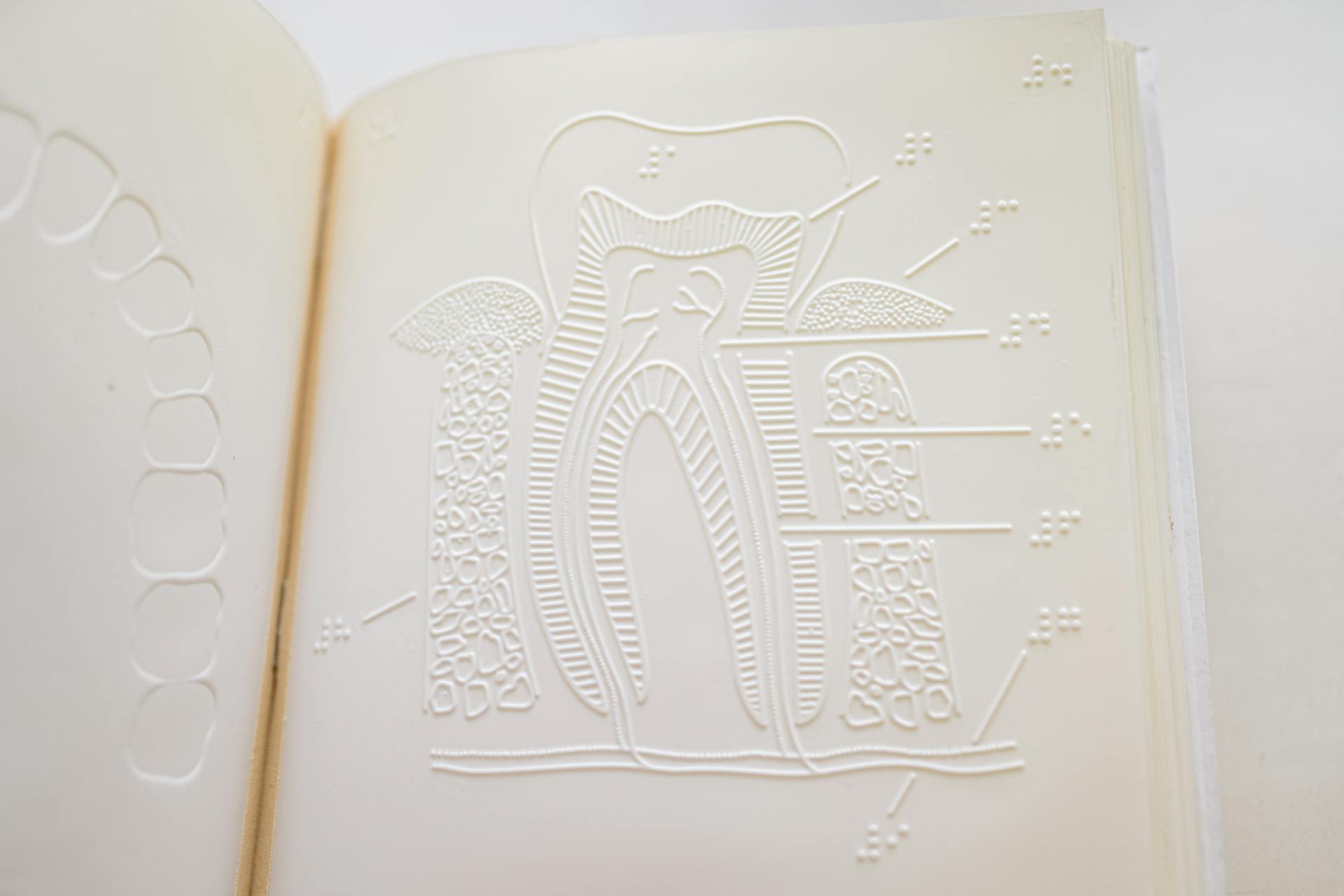
Use case informatic is a systematic approach to understanding the needs and requirements of a system or process. It involves identifying, documenting, and analyzing the interactions between users and the system to ensure it meets their needs.
A use case is a description of how a user interacts with a system to achieve a specific goal. It's a way to capture the functional requirements of a system by identifying the user's actions and the system's responses.
Use cases are typically represented as a diagram, showing the user's actions and the system's responses. This visual representation helps to identify the key steps involved in a use case and the interactions between the user and the system.
By understanding the use cases, developers can design a system that meets the needs of its users and is easy to use.
Intriguing read: ACM Software System Award
What is Use Case Informatic
Use cases are applied in various contexts, including Object Oriented Software Engineering (OOSE), Unified Modeling Language (UML), and Unified Software Development Process (UP).
Use cases are a driving element in OOSE, and they are used as a behavioral modeling instrument in UML.
Unified Software Development Process (UP) and its predecessor, the IBMRational Unified Process (RUP), also utilize use cases.
Use cases are used in up-front documentation of software requirements specification (SRS) as an alternative structure for functional requirements.
In addition to these contexts, use cases are also used in deriving the design from requirements using the entity-control-boundary approach, and in agile development.
A use case analysis is the primary form for gathering usage requirements for a new software program or task to be completed.
The primary goals of a use case analysis are designing a system from the user's perspective, communicating system behavior in the user's terms, and specifying all externally visible behaviors.
Use cases are used to clearly communicate system requirements, how the system is to be used, the roles the user plays in the system, what the system does in response to user stimulus, what the user receives from the system, and what value the customer or user will receive from the system.
Intriguing read: Ai Image Analysis Software
Here are some of the key goals of a use case analysis:
- Designing a system from the user's perspective
- Communicating system behavior in the user's terms
- Specifying all externally visible behaviors
- Communicating system requirements
- Describing how the system is to be used
- Describing the roles the user plays in the system
- Describing what the system does in response to user stimulus
- Describing what the user receives from the system
- Describing what value the customer or user will receive from the system
Identifying Use Cases
Identifying use cases is a crucial step in the use case informatic process. It involves communicating with business owners or senior executives to understand the company's direction and operations. They have the authority and information required to make business decisions, ensuring that the identified use cases align with the company's values, needs, and strategy.
To identify use cases, you should talk to business stakeholders, not just anyone else. This is because they have a clear understanding of the company's operations and can provide valuable insights.
Use cases can be found by asking the right questions and gathering information from business stakeholders. By doing so, you can create a list of use cases that reflect the company's goals and objectives. For example, you may identify use cases related to reserving trips, such as "Reserve Telephone Trip" or "Reserve Online Trip".
Intriguing read: Ethical Considerations for Generative Ai Use in Business
How to Identify?
To identify use cases, you need to communicate with business owners or senior executives of the company, also known as business stakeholders. They have the authority and information required for making business decisions.
Business stakeholders are clear about the company's directions and actual operations, so it's essential to identify use cases with them. They can provide valuable insights into the company's values, needs, and strategy.
Identifying use cases with business stakeholders ensures that the use cases are aligned with the company's business values, needs, and strategy. This is crucial for developing a system that meets the company's requirements.
Involving business stakeholders in the use case identification process helps to avoid miscommunication and ensures that everyone is on the same page. It's a collaborative approach that benefits the entire organization.
Why
Identifying use cases is crucial because it helps you understand the problem you're trying to solve. By doing so, you can create a solution that meets the actual needs of your users.
A use case is a real-world scenario that describes a specific task or goal. For instance, a user might want to order food online, which involves multiple steps and interactions with the system.
Defining use cases requires empathy and understanding of your users' needs. You need to put yourself in their shoes and think about what they want to achieve.
A use case might involve several actors, including the user, the system, and possibly other external systems. For example, ordering food online might involve the user, the online food ordering system, and the restaurant's inventory system.
The goal of a use case is to identify the functional and non-functional requirements of the system. By doing so, you can create a solution that meets the needs of your users while also being efficient and scalable.
Use cases can be described using a simple template, including the user goal, preconditions, and postconditions.
Context
When discussing use cases, it's essential to consider the context in which they are used. Use cases are often described as Black Boxes, which means they document what a system should do without explaining how it should do it.
In practice, Black Box Use Cases are usually the norm, but this approach can present challenges when it comes to deriving test cases. Formal notations like activity diagrams or state diagrams can help supplement Black Box Use Cases, making it easier to derive test cases from them.
The pre- and post-conditions of a use case are also a valuable source for test cases. However, due to the complexity of relationships and parallel processes among use cases, a separate consideration is not sufficient for testing the overall system.
Use cases can be divided into Business Application Cases and System Application Cases. For example, a Business Application Case like "Reserve Trip" can be broken down into several System Application Cases, such as "Reserve Telephone Trip" or "Reserve Online Trip".
Recommended read: Binary Test
What Exist?
There are two main types of Use Cases: Black Box and White Box. A Black Box Use Case documents what a system should do without showing how it's done, while a White Box Use Case documents the internal implementation of a system.
Black Box Use Cases are usually described as they provide a clear view of the system's external behavior, but they can present challenges when deriving test cases. Formal notations like activity diagrams or state diagrams can help supplement Black Box Use Cases.
White Box Use Cases, on the other hand, provide a detailed view of the system's internal components and their relationships. They're useful for understanding how a system works, but they can be more complex to create and maintain.
Here are the main differences between Black Box and White Box Use Cases:
Business Application Cases and System Application Cases are also types of Use Cases. Business Application Cases focus on the business goals and processes, while System Application Cases focus on the system's functionality and interactions.
Examples and Types
Use cases are a great way to illustrate the functionality of a system, and they can be applied to various types of systems, such as the ATM, online photo album, and health tracking app.
The rule of thumb for use case identification is to involve business stakeholders in the process, ensuring that the use cases identified are relevant to the target system.
A use case can be as simple as withdrawing cash from an ATM or as complex as recording a workout and producing workout statistics in a health tracking app.
Here are some examples of use cases for different systems:
A well-written use case should include a brief description, stakeholders, postconditions, preconditions, and a basic flow. The basic flow should outline the steps a user takes to achieve their goal, without including any UI elements or operations.
For example, a use case for saving an article might include the following postconditions: "The article is saved and an updated view is shown." and "An edit record for the article is created by the system, so watchers of the article can be informed of the update later."
The basic flow for this use case might include the following steps:
- The system provides a new editor area/box filled with all the article's relevant content with an informative edit summary for the member to edit.
- The member modifies the article's content until the member is satisfied.
- The member fills out the edit summary, tells the system if they want to watch this article, and submits the edit.
- The system saves the article, logs the edit event, and finishes any necessary post-processing.
- The system presents the updated view of the article to the member.
Writing Use Cases
Writing use cases is a crucial step in understanding a system from the user's perspective. A use case should describe the functional requirements of a system from the end user's perspective, creating a goal-focused sequence of events that is easy for users and developers to follow.
To write a use case, start by identifying the business goal, which can be a verb + noun or noun phrase. For example, "Register Account" or "Place Order". Use cases are designed to identify business goals, not to describe interactions between users and systems.
A complete use case includes one main or basic flow and various alternate flows. It should also be multilevel, so that one use case can use the functionality of another one. According to the Software Engineering Body of Knowledge (SWEBOK), use cases belong to the scenario-based requirement elicitation techniques.
Here are some characteristics of a well-written use case:
- Organize functional requirements.
- Model the goals of system/actor interactions.
- Record paths from trigger events to goals.
- Describe one main flow of events and various alternate flows.
- Be multilevel.
Remember, use cases are a good way of describing and understanding a system from the user's perspective, but they should not be too complicated. Some practice is required to create detailed descriptions that are easy to understand.
Online Photo Album
Writing use cases for an online photo album requires careful consideration.
A typical online photo album allows users to tag their uploaded photos. Tagging photos can be a standalone use case if the business stakeholders want users to access the system solely for tagging photos.
However, if stakeholders think tagging is only part of the photo upload process, it shouldn't be a separate use case.
Identifying use cases is not a casual step. The capability to tag photos will be supported differently under use cases 'tag photo' and 'edit photo'.
For more insights, see: Ai Photo Enhancer Software
Health Tracking App
Writing use cases for a health tracking app can be a challenge. It's essential to define a clear scope for the features.
Use cases like "record workout" and "produce workout statistic" are specific and well-defined. They help to identify the functionality of the app.
A use case like "maintain good health" is too vague. It's a broad goal that every health tracking app aims to achieve, but it doesn't specify what features the app can provide to fulfill it.
Use cases should be focused and concrete, not abstract or too wide in scope. This helps to ensure that the app's development stays on track and meets the user's needs.
Recommended read: Health Informatic Certification
How to Write
Writing use cases is a straightforward process, but it requires some practice to get it right. A use case is simply a verb + noun or noun phrase that describes a business goal.
To write a use case, start by identifying the goal you want to achieve. This can be as simple as "Register Account" or "Place Order". Use cases are designed to identify business goals, not to describe the interactions between users and systems.
There are different styles of writing use cases, such as the Cockburn style, which includes a title, primary actor, scope, level, and story. The story is a paragraph or two of text that informally describes what happens.
Another style is the Fowler style, which includes a title, main success scenario, and extensions. The main success scenario is a numbered list of steps, and the extensions are separately numbered lists.
Use cases should be organized, modeling the goals of system/actor interactions, and recording paths from trigger events to goals. They should also describe one main flow of events and various alternate flows.
A complete use case will include one main or basic flow and various alternate flows. The alternate flow describes normal variations to the basic flow as well as unusual situations.
Here are some key characteristics of a use case:
- Organize functional requirements
- Model the goals of system/actor interactions
- Record paths from trigger events to goals
- Describe one main flow of events and various alternate flows
- Be multilevel, so one use case can use the functionality of another one
Remember, use cases are a good way of describing and understanding a system from the user's perspective. They help identify business goals and provide a clear understanding of what the system should do.
Use Case Analysis
Use Case Analysis is a crucial step in the software development process. It involves identifying the classes that can perform the behavior needed to make the system function successfully.
Classes can be created from various sources, including previous similar systems, enterprise models, and data mining. Once classes are created, relationships must be developed between them to model the task of the system.
Use cases are applied in different contexts, including Object Oriented Software Engineering (OOSE), Unified Modeling Language (UML), and Unified Software Development Process (UP). They are also used in agile development and as an alternative structure for the functional requirements in the software requirements specification (SRS).
The contexts where use cases are applied include:
- Object Oriented Software Engineering (OOSE)
- Unified Modeling Language (UML)
- Unified Software Development Process (UP)
- agile development
- software requirements specification (SRS)
Use cases help in developing the design from the requirements using the entity-control-boundary approach. They are also used to derive the design from the requirements.
Consider reading: Grokking Object Oriented Design
Frequently Asked Questions
What is a use case example?
A use case example is a specific scenario, like booking a flight, that helps users achieve a goal through a set of features and steps. This example illustrates how a use case is a real-world application of your product's functionality.
What are the main components of a use case?
The main components of a use case are actors, systems, and relationships, which work together to show how users and external systems interact with the system being modeled. Understanding these components is key to creating effective use case diagrams.
How to define a data use case?
A data use case is defined as the way a business user leverages data to answer specific business questions and inform decision-making. It involves identifying tangible business questions and deriving insights to drive informed decisions.
Featured Images: pexels.com


